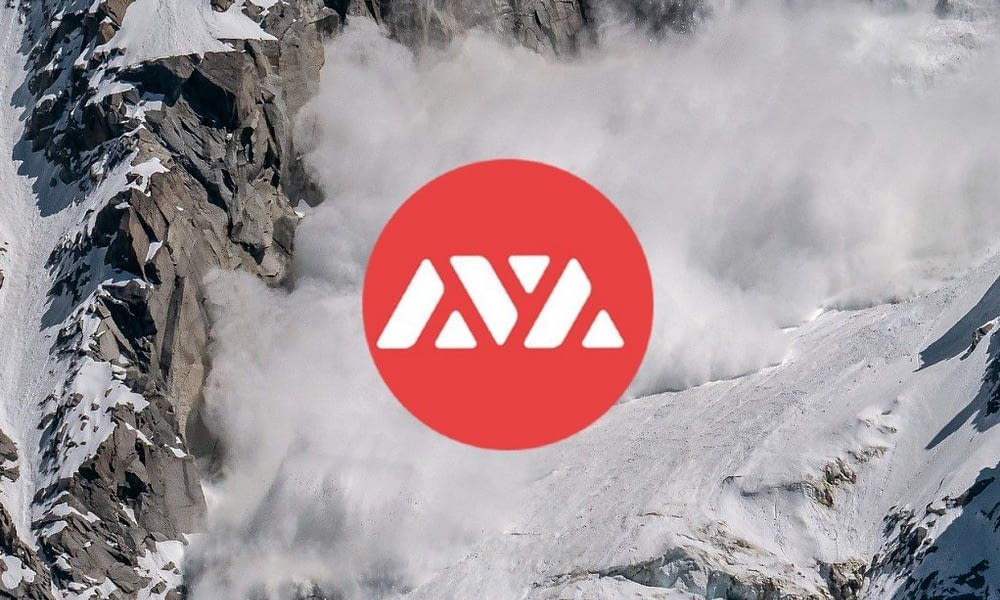You may have heard of Ethereum, and you may have heard that Ethereum is about to go through a “merge” from Proof of Work to Proof of Stake. If you don’t know what any of that means, you should do some research.
Anyway, I thought it was a good idea to let some people know there’s another blockchain out there called Avalanche, one of my personal favourites.
Let’s compare Ethereum and Avalanche to give you some perspective.
What is Ethereum?
Ethereum changed the crypto market forever as it was the first second-generation blockchain to enter the market. This protocol was revolutionary as it demonstrated the concept of smart contracts. As such, Ethereum has been a pioneering force in the market. It has helped to drive innovation with the launch of the ERC-20 token standard and more.
Today, Ethereum operates as the largest and most diverse DeFi ecosystem in the world. It’s also the largest Dapp network in use. These facts make Ethereum arguably the most important blockchain in the market. Notably, the network is in the middle of a major upgrade that will improve the scalability and functionality of the protocol.
The ETH 2.0 update is the biggest upgrade the network has ever undergone, called the “merge”. It will take the Proof-of-Work (PoW) consensus mechanism used by the network and convert it to a Proof-of-Stake (PoS) system. This will improve the network’s usability and provide developers with far more options.
What Problems was Ethereum Built to Alleviate?
Ethereum was designed to fight centralization. The network was the first to support smart contract programmability and Dapp creation. As such, it has served a vital role in demonstrating how decentralized networks improve on their centralized counterparts. The system was designed to be flexible from day one. Developers can create Dapps using multiple programming languages including C++, Java, JavaScript, Python, Ruby, and more.
How Does Ethereum Work?
Ethereum operates as a layer one blockchain. Notably, Ethereum isn’t a cryptocurrency as many believe. It’s actually the network that Ether (ETH), the network’s utility token, resides on. It leverages a network of participants known as nodes to compute smart contract equations and host data. For their efforts, these nodes receive rewards in the form of ETH based on their contribution level.
What is Avalanche?
Avalanche is a fourth-generation DeFi (decentralized finance) enabled protocol. The network leverages a multi-chain approach to reduce fees and improve programmability. Avalanche was built to help alleviate many of the problems Ethereum developers encounter including scalability issues. As such, it has some specific features geared towards onboarding developers from Ethereum over to the Avalanche system.
What Problems was Avalanche Built to Alleviate?
Avalanche was built to reduce many of the problems faced by Ethereum users. The protocol combines 3 separate blockchains to accomplish this task. As part of this strategy, the network introduces a multi-language approach to programming. Specifically, Avalanche developers can program smart contracts using multiple virtual machines.
Another problem that Avalanche helps to alleviate is Ethereum’s lack of support for compliant Dapps. Compliant Dapps are protocols that follow complex rule sets. These rule sets are usually a part of some regulatory requirement. The Avalanche network enables developers to determine how each asset is traded, shared, and hosted for the life of the project which makes it ideal for Dapps servicing highly regulated industries.
How Does Avalanche Work?
Avalanche combines three separate blockchain networks to achieve superior scalability and functionality. The protocol operates as a frictionless payment system, cryptocurrency, and DeFi ecosystem. The 3 blockchains, the X-chain, C-chain, and P-chain all serve different roles in the network. Together they empower Avalanche developers to create more robust Dapps.
X-chain
The X-chain is the network that is responsible for the issuance of new digital assets. This network supports the creation of new tokens, NFTs Non-fungible tokens, stablecoins, and more. Users can utilize AVAX to collateralize these assets.
C-chain
The C-chain is designed to improve Ethereum developer onboarding. The developers describe this network as a conversion chain. It features a bunch of protocols to help Ethereum developers seamlessly convert their Dapps to Avalanche.
P-chain
The P-chain is responsible for monitoring and validating the state of subnets. These Avalanche-powered blockchains can be set up to meet nearly any need. P-chain is also responsible for hosting many of the network’s DeFi features such as its staking protocols.
Is Avalanche an Ethereum killer?
Now that you know some more about Avalanche, let’s do a comparison of speed of transactions. This is the amount of time each existing blockchain currently takes to perform a transaction:
- Bitcoin: 60 mins
- Ethereum 2.0: 6 mins
- Cardano: 5 mins
- Polkadot: 60 secs (60 mins to external chains)
- Elrond: 51 secs
- Solana: 13 secs
- Avalanche: less than 1 second
And this is how many transactions per second the various current blockchains can deal with:
- Credit Cards (Visa / Mastercard) – around 5000 TPS
- Avalanche – 4,500 TPS
- Solana – 2,000 TPS
- Cardano – 250 TPS
- Ethereum – 15 TPS
All blockchains are trying to increase their TPS speeds.
.Avax (Avvy) Domain Names
Are there such things as .AVAX domain names? Yes, you can find out more by watching the Assets Show podcast interview with Conor Bode from Avvy Domains on this very website.
Further Avalanche Research
Go and follow @CryptoSec on Twitter:


